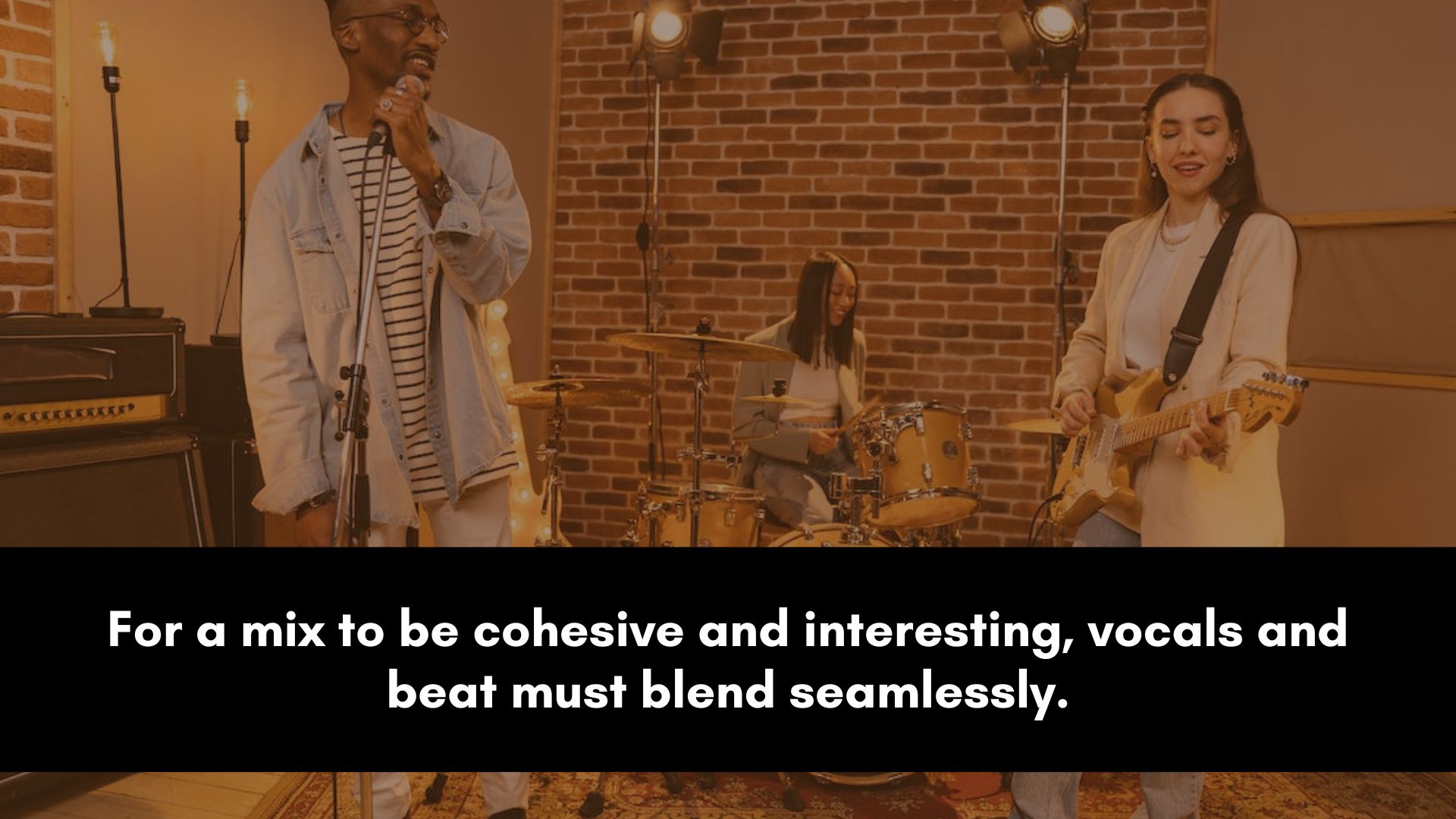Ready to give your vocals the spotlight they deserve?
Uncover the secrets to achieving vocal clarity in your mixes.
Learn the step-by-step techniques that professionals use to make space for vocals, allowing them to cut through the mix with power and emotion.
How to Make Space for Vocals in a Mix

Get ready to transform your mixes into professional soundscapes that capture listeners' attention.
In this section, we'll dive into seven essential techniques that will help you achieve optimal vocal space.
a. EQ Carving for Vocal Clarity
To create space for vocals, EQ can be applied individually to instruments.
For instance, on a guitar, you can reduce frequencies that clash with vocals, letting vocals stand out.
By using EQ on instruments like drums, you can remove excess frequencies that might crowd vocals.
EQ helps vocals cut through without competing with other sounds.
The goal is to sculpt each instrument's frequencies, giving vocals their own space.
This approach ensures that vocals shine with clarity, contributing to a well-balanced mix where every element has its place.
b. Dynamic Range Control
Balancing dynamic range for vocals and instruments is key for vocal space.
By compressing vocals, softer parts get louder, and louder parts get controlled. This maintains a consistent vocal presence throughout the mix.
Similarly, compressing instruments evens out their levels. This prevents instruments from overpowering vocals.
It's about control.
So, when vocals and instruments share a sonic room, they coexist without clashing.
Result? Clear vocals and intelligible lyrics.
It's like a jigsaw puzzle. Every piece fits; no part dominates.
Controlling dynamic range improves vocal prominence, allowing their emotions to shine through while harmonizing with the music.
c. Panning and Stereo Imaging
Enhance vocal presence by strategically placing vocals in the stereo field.
Panning vocals is a technique that can be applied to give vocals their own space in a mix.
The kick, bass, snare, lead vocal, and main guitar are normally kept in the center of the stereo field.
Supporting vocals and other background instruments can be panned to the sides to give your mix a sense of width.
Balancing instruments around vocals creates a wide and open mix, where each element has its own place.
This separation helps vocals shine without being overwhelmed.
Panning is a powerful tool to make vocals stand out while maintaining a natural and balanced sound, enhancing the overall mix quality.
d. Reverb and Delay Effects
Reverb and delay effects add depth and space to sounds.
In a mix, they're used on vocals and instruments to give each its own place.
These effects create a sense of distance, pushing sounds back.
By using effects, you can make the vocals come forward while the instruments stay behind.
Experiment with settings to find a balance that works.
Reverb and delay enhance vocal presence, making your mix engaging and professional.
The aim is to allow vocals and instruments to coexist harmoniously while maintaining a focused and impactful vocal performance.
e. Sidechain Ducking
Applying sidechain to instruments or buses can prevent vocal masking.
When vocals play, the sidechain compressor lowers those instrument levels temporarily, allowing vocals to be heard clearly.
This technique ensures vocals cut through without overpowering instruments.
It's effective for guitars, pianos, synths, or even the whole instrumental bus.
Sidechain compression dynamically maintains balance between vocals and instruments, enhancing clarity.
This way, vocals stand out without disruption, giving a polished and focused sound to the mix.
f. Adding Excitement With Saturation
Saturation (or distortion) can make vocals and instruments sound distinct in a mix.
When applied to vocals, saturation can add character, helping them stand out.
By using saturation, vocals remain clear while instruments have enhanced presence.
This maintains separation, making vocals more noticeable.
Saturation adds depth to a mix, contributing to a well-defined space for each element.
When done right, saturation enhances vocals and instruments, allowing them to coexist harmoniously while adding texture and depth to the overall sound.
g. Multiband Compression on Vocals
Multiband compression can be applied to vocals and instruments to create space in a mix.
On vocals, it evens out different frequency parts, ensuring a balanced sound.
For instruments, multiband compression can help control strong frequencies to give the vocals more prominence.
By using this tool, vocals can stay clear, and instruments won't overpower them.
Multiband compression maintains a consistent balance, allowing vocals to shine without being masked.
It's a technique that enhances separation, giving vocals and instruments their own sonic space.
With proper multiband compression, a mix gains depth and clarity, making vocals truly stand out amidst the arrangement.
FAQ:
Where should vocals sit in the mix?
Vocals should sit upfront and center in the mix, distinct from instruments but not overpowering.
They need space to be heard clearly and convey emotion, yet blend seamlessly to form a cohesive sound.
Balancing vocals involves careful EQ, compression, use of effects, and panning to ensure they're present, clear, and impactful while harmonizing with the overall musical arrangement.
What EQ is needed to make space for vocals?
Parametric EQ is usually the go-to for creating vocal space.
It allows precise adjustment of specific frequencies without affecting others.
Dynamic EQ can also help control resonances that vary during a performance.
Both of these EQ types work together (alongside other EQ types), enhancing vocals' clarity and presence in the mix.
How is this a free download when you want to be paid for it??
I have no idea about what you’re talking about Jeff, nothing is for sale here.